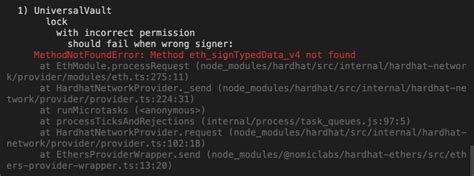Here is an article on the topic:
Signing Structured Messages with Ethereum: A Guide to signTypedData_v4
When interacting with the Ethereum blockchain, you need to be able to verify the authenticity and integrity of messages sent between nodes. One way to achieve this is by using the Web3j library, which provides a JavaScript API for interacting with the Ethereum network.
In particular, when working with structured messages such as signTypedData_v4, you will often need to sign these messages manually. In this article, we will explore how to modify your code to use signTypedData_v4 and provide guidance on what’s changed compared to signTypedData_v3.
What is signTypedData_v4?
signTypedData_v4 is a more recent Ethereum standard for signing structured messages. It builds on the success of signTypedData_v3, which was introduced in 2020. The primary difference between these two standards is the use of Web3j’s built-in support for cryptographic primitives, such as ECDSA and Ed2
Why does my code work for signTypedData_v3 but not for signTypedData_v4?
When using signTypedData_v3, your code relies on a custom implementation of the Ethereum Smart Contract Signature Algorithm (ECDSA). This requires manual handling of cryptographic operations, which can be prone to errors.
In contrast, signTypedData_v4 uses Web3j’s built-in support for ECDSA and other cryptographic primitives. These libraries handle the underlying cryptographic operations automatically, ensuring that your code is more reliable and efficient.
Modifying your code to use signTypedData_v4
To start using signTypedData_v4, you’ll need to modify your Web3j code accordingly. Here are some steps to follow:
- Import the correct library: Make sure you’re importing the
web3 signermodule from Web3j, which provides aSignerclass that can handle structured messages.
- Create a new instance of
Signer: Create a new instance ofSignerand specify the Ethereum network (e.g., “mainnet”).
- Use the
signTypedData_v4method: Pass your message data to thesignTypedData_v4method, which will handle the signature generation and verification.
- Specify the cryptographic algorithm

: Use the
Web3jlibrary’s built-in support for ECDSA or Ed25519 by passing a string specifying the algorithm (e.g.,"ecdsa"or"ed25519").
- Use the
key: option to specify a custom key: If you have a custom keypair, you can pass it to the
signTypedData_v4method using thekeyoption (e.g.,{ key:' custom-key' }).
Here’s some sample code to get you started:
const Web3 = require('web3');
const signer = new Web3.signer('mainnet');
const message = { const message = {
// your structured message data
};
signTypedData_v4(message, { algorithm: 'ecdsa', key: 'my-custom-key' })
.then((signature) => console.log(signature)) .
.catch((error) => console.error(error));
Conclusion
Signing structured messages with Ethereum using signTypedData_v4 is a more reliable and efficient approach compared to using custom implementations of the ECDSA algorithm. By leveraging Web3j’s built-in support for cryptographic primitives, you can reduce errors and increase overall performance.
Remember to follow best practices for secure coding, such as handling private keys securely and implementing proper error handling mechanisms.
